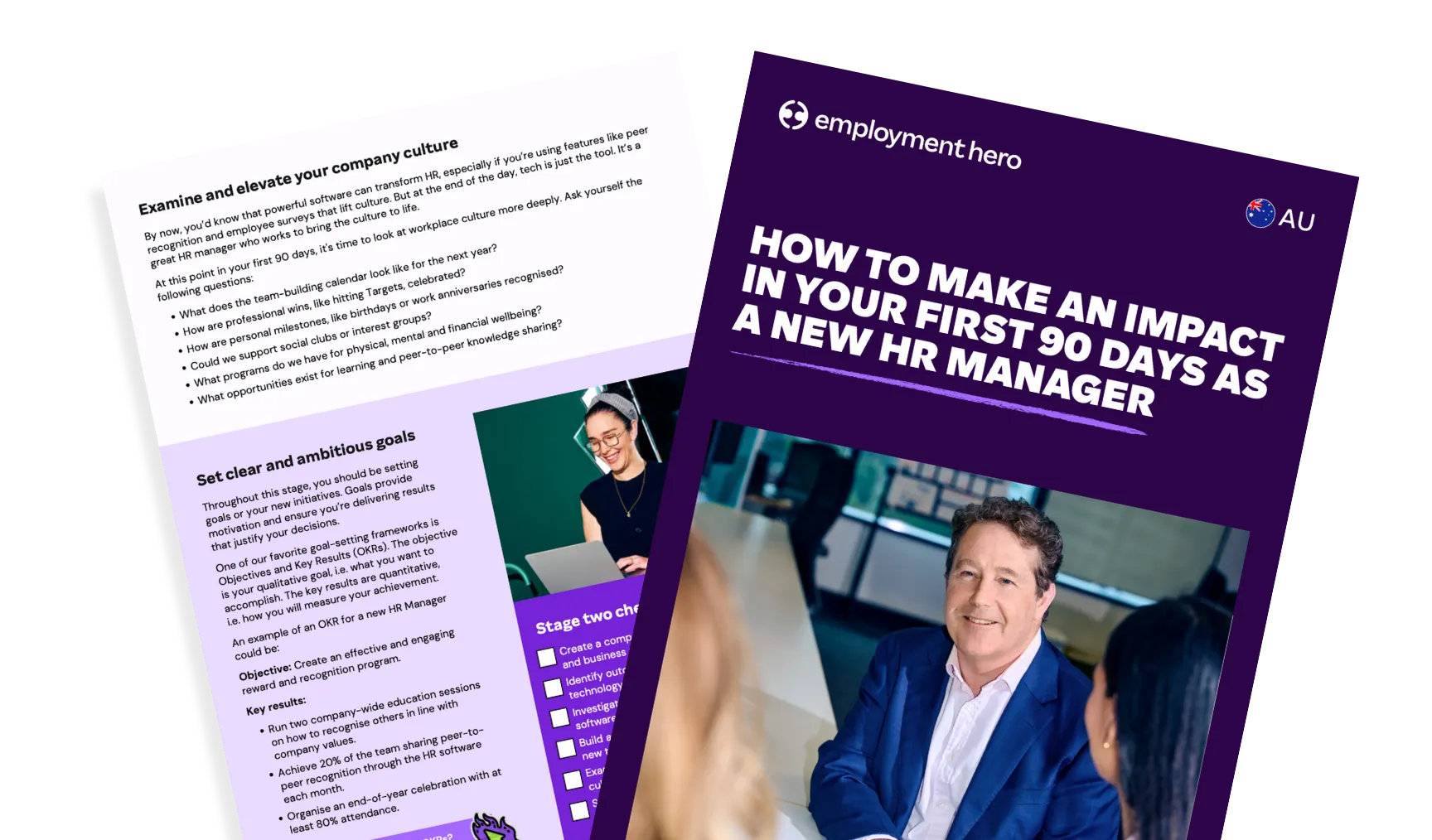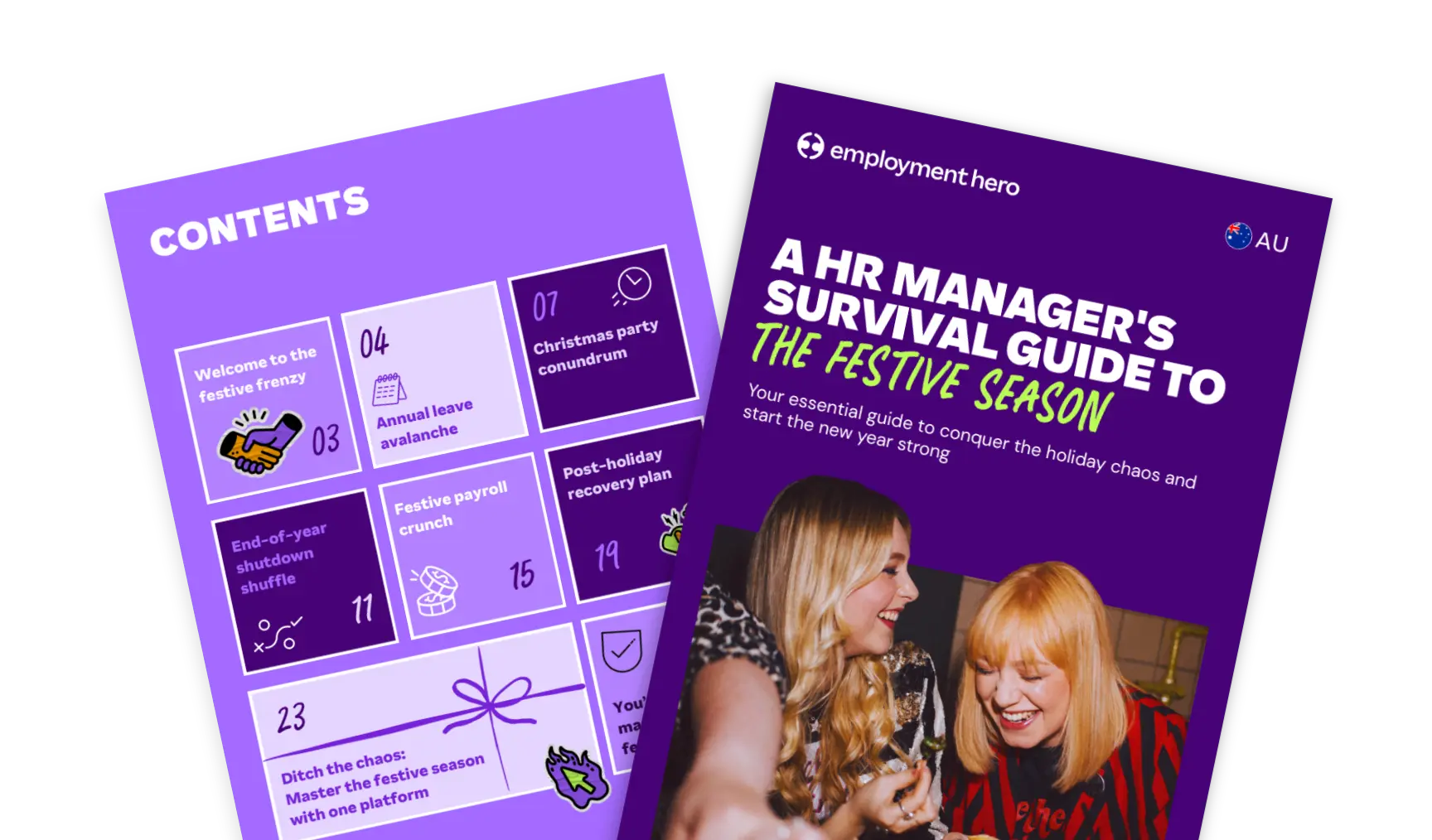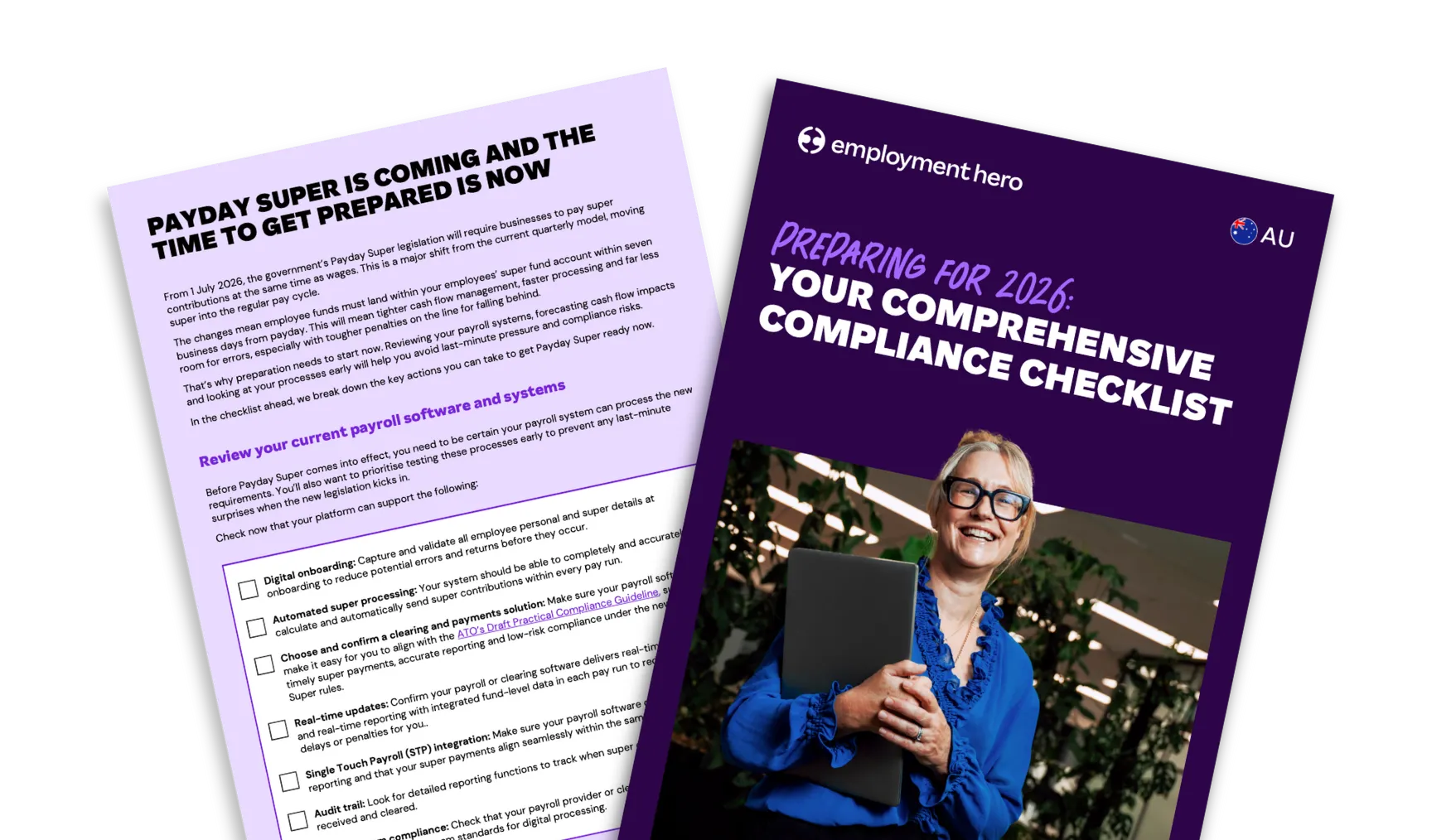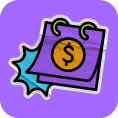How To Create a Standout Employee Experience [Free Guide]
Published
How To Create a Standout Employee Experience [Free Guide]
We all know that people are the heart and soul of every business. They’re the ones who keep the cogs turning, drive growth and work actively towards achieving goals.
Let’s face it – without them, you wouldn’t be where you are today.
But have you ever thought about the end-to-end experience of your employees? Do you think they’d reflect on their employee experience positively?
We know that employees are looking for more than just their regular paycheck. Employees are actively seeking out roles at companies that can provide them with growth, fulfilment and recognition for a job well done.
They’re looking for a well-rounded employee journey that will provide them with meaningful work and connections.
What’s in the employee experience guide?
Considering we spend on average one-third of our lives at work, you want to make your employees feel valued and positive about heading to work or logging on for the day.
From the hiring process right through to exit interviews, designing your employee experience can make a huge difference when it comes to keeping your team happy, engaged and loyal.
We’ll show you how to create a standout employee experience that will be so good that your team will transform into brand advocates and won’t even consider leaving.
Download the guide now.
What is employee experience (EX)?
The employee experience can be defined as the overall experience an employee has over the tenure of employment at a company. This refers to the entire employee journey throughout the employee lifecycle, right from the initial attraction stage through to the exit.
It’s influenced by everything from company culture to management style, team communications and wellbeing programs
Regardless of whether you’ve designed your employee experience or not, each employee has their own thoughts on your company. Without consideration for this, you may find that your ex-employees share negative views of your organisation with their personal and professional networks.
Does employee experience really matter?
Yes! Remember that your employee experience strategy can be the difference between attracting high-quality talent and retaining it. If you’ve got top talent, but they hate going to work, they’re not going to stay around. And what happens when these people leave? They tell people about their experience.
And then their networks tell people and word gets around that you’re not a great place to work. The result? Potential new employees perceive your company badly and are deterred from even considering applying to your business. Eek!
To prevent this, regularly conduct employee experience surveys to understand how your employees feel. A strong company culture is vital, as engaged employees are more likely to stay, positively impacting business performance.
By focusing on employee needs throughout the entire employee lifecycle, you create a positive reputation that can attract and retain top talent. Neglecting this can lead to high turnover, impacting your customer satisfaction as well. The holistic employee experience strategy must include opportunities for career development to keep your team motivated.
Remember, even a small increase in retention can significantly reduce costs, potentially saving a portion of an employee’s annual salary that would otherwise be spent on recruitment. The employee experience strategy is not a one-time fix, but a continuous effort. If you’re new to HR management, our Introduction To Managing Human Resources guide is a great place to start.
How does employee satisfaction help businesses?
In addition to the many benefits that come with designing a great employee experience, it also contributes to improved business performance.
Jacob Morgan, author of “The Employee Experience Advantage” and avid researcher of the future of work, found that organisations who invest in the employee experience result in 4 times the average profit and more than double the average revenue.
According to other research, you can improve profitability by up to 25%, if you actively design and develop the employee experience. In this case, even the slightest improvements can have a positive impact on business success. Sounds good, right?
The employee experience should be viewed holistically. Once you have a general overview of how your employee experience is, you can dive in deeper and break it down according to the employee lifecycle.
It’s important to remember that the employee experience can ‘make or break’ your business. Your team is your greatest asset and at the end of the day, the ones that steer the ship.
How do you create a positive employee experience?
Designing a positive experience is dependent on multiple factors such as the type of industry, the type of work performed and the location of your workforce.
A positive employee experience stretches further than the occasional team lunch and free tea and biscuits in the lunchroom. It encompasses every aspect of the employee lifecycle from attracting top talent right through to exit interviews.
With so many factors at play, designing your employee experience is not a one size fits all approach.
If you’re looking for more information on designing the employee experience, you’re in luck. Take a look at the approach of the employee experience through the lens of design thinking.
What is Design Thinking?
Design thinking can be described as; “an iterative process in which we seek to understand the user, challenge assumptions, and redefine problems in an attempt to identify alternative strategies and solutions that might not be instantly apparent with our initial level of understanding. At the same time, design thinking provides a solution-based approach to solving problems.”
But how do business and HR leaders think like a designer and craft a compelling employee experience, I hear you ask? Simple.
Read on as we teach you strategies to think like a designer and create a great employee experience. It will assist in boosting your teams’ engagement and have them performing at the top of their game.
To ensure you’re providing a positive experience from the start, use our candidate experience checklist to nail the candidate experience every single time.
Get familiar with the employee lifecycle
When starting out, we suggest taking a look at the employee lifecycle. This forms the pillar of your entire strategy.
For every stage of the employee lifecycle, you should evaluate and create strategies for each and review how they work together. This way, you’ll be on your way to creating a robust employee experience that will have a big impact on your business and employees.
We have included tips for each of these stages in our guide, but here’s a quick recap to get your toes wet.
Stage 1: Attraction
This is the first phase of the employee lifecycle and arguably the most important for attracting top talent.
In this stage, you should consider your employee value proposition (EVP) and employer branding
Stage 2: Recruitment
The recruitment stage is a very people-focused stage of the employment lifecycle. This is where the candidate and the hiring manager explore whether they are the right fit for the role and company.
It involves getting to know what drives and motivates them whilst assessing the culture add.
Stage 3: Onboarding
This is where the workplace experience begins, whether on-site or remote. On an employee’s first day and in their initial weeks, they will gain a sense of the culture and get an overall feel for the company.
Nailing this stage of the employee experience is critical for setting them up for success in a way that makes them feel confident they’ve made the right decision to join your company.
Stage 4: Development
Career planning, learning and professional development are essential components of the employee engagement puzzle. When your team feels they are learning and growing in their role, they’re more likely to have a positive experience.
When learning and career growth are stunted, this is where they can begin to become disengaged – something you want to actively try and avoid.
Stage 5: Retention
Retention is often one of the hardest parts to get right when it comes to the employee experience. If you get it wrong, you run the risk of top talent walking out the door (and potentially into the open arms of a competitor).
In this stage, you need to focus on reward, recognition, career growth and engagement strategies to effectively retain your team.
If you nail the retention stage, you’ll create a team of high-performing, loyal contributors that will continue to go above and beyond in their role – AKA, the dream employee!
Hero tip: Check in on employee wellbeing with these employee wellbeing survey questions
Stage 6: Separation
When it comes to parting ways with an employee, the employee/employer relationship is often considered done and dusted once that resignation letter gets handed in. But it doesn’t (and shouldn’t) have to be this way.
When it comes to the end of tenure for an employee, it’s important you actively listen to their feedback from their exit interview. This can help you improve your employee experience so you can make things better for your current team.
How to apply design thinking to the employee experience
Before you get started, map the design thinking process to every aspect of the employee lifecycle. By doing this, you can get a thorough overview of what you need to improve. Not only this, it will keep you on track to achieve a well-rounded employee experience.
We know that many of you are new to the design thinking process, so we’ve included a running example throughout this blog, which we will mark with an 🌟 EXAMPLE
With this being said, you’re probably sitting there thinking “great, but where do I start?”.
It starts with research, which leads us to the first part of the process.
1. Empathise
The first phase of design thinking is to understand the problem you’re trying to solve on an empathetic level. This forms the basis of the entire process, so it’s crucial to get this right.
If you’ve heard the team ‘customer-centric’ thrown around by designers, it just means to put customer satisfaction and customer experience first. Apply this thinking to your employees and be ’employee-centric’.
When it comes to designing the employee experience, this step involves getting employee feedback and finding out:
- Who your employees actually are
- What issues they’re currently experiencing
Find out what they enjoy, what they find difficult and what they believe would make the biggest difference to them at work.
All of these questions will determine what can make their overall employee experience at work a better one.
Although it may seem overwhelming initially, researching your team can be as simple as sending around employee surveys and asking a few people to participate in a more in-depth interview.
A few questions can provide a lot of insight!
Another great way to understand your employees is to have them participate in a journey mapping session. By using employee journey maps, you can get to the nitty-gritty of how your team is feeling at every stage of the lifecycle and create a strategy to improve every aspect.
🌟 EXAMPLE: You gather employee feedback by sending around an initial survey for your employees to complete. Include four questions so you can improve your retention strategy.
These employee engagement questions might include:
- What do you find most challenging in your day-to-day?
- Rate your learning and development over the past year from 1-10 and explain why.
- How likely are you to recommend a friend to work here? Why/why not?
- How satisfied with the feedback or recognition are you receiving for your work? Why/why not?
Source: Nielsen Norman Group
2. Define
The second stage is to define the problems or challenges at hand. You’ve got your research, so where do you go from here? Remember that this definition will form the centrepiece of your efforts and include metrics to measure over time.
In the define stage, you have the opportunity to dive deeper into your people analytics to look at common trends. Is your turnover increasing? Have you noticed a drop in the number of people participating in your employee surveys?
This is the time to take an open-minded approach and analyse where you can improve your employee engagement.
🌟 EXAMPLE: From the previous step, you find that many employees believe there is a lack of career growth at the company because they feel as though they don’t have the skills required to progress, even though they have a $500 learning allowance per year.
The definition/goal could be: All employees are using 100% of their learning allowance.
3. Ideate
The third step is to brainstorm ways you can fix the problems you’re experiencing. When it comes to thinking outside the box, it’s important to get your creative brainwaves pumping.
At Employment Hero, we take five minutes at the start of each creative strategy-based session to do an activity completely unrelated to the task at hand. It gets the entire team excited to solve problems.
Some of our go-to’s include:
- Name all of the things you can make with an X (e.g. piece of string).
- Draw as many things you can that are round.
- Two truths, one lie.
Once you’ve completed this, it’s time to get to the action by:
- Brainstorming – bouncing ideas off the team verbally.
- Brain dumping – using post-it notes to individually write down ideas and go through them together at the end of a set time.
- Challenging assumptions – you turn common expectations of scenarios on their head to give you a fresh perspective.
Ask people from outside of your HR team to be involved in this process. People in other teams often have a fresh perspective and bring new ideas to the table.
🌟 EXAMPLE: Using brain dumping to come up with ideas on how your team can be accountable for driving their own career growth.
4. Prototype
The prototype stage involves the changes you’ve agreed on in the ideation phase to come to life. The changes made in the prototype stage aren’t rolled out company-wide, however, can be brought to life and tested on a small group or team of people.
This stage is used to show you how your changes would come into effect with the wider team. It also allows you to go back to the previous steps if changes need to be made.
🌟 EXAMPLE: Roll out a professional development plan to one team first and gain their insights and thoughts on the process. This can be on the types of questions asked, how often it is reviewed, etc.
5. Test
Although it’s the final part of the process, this is often the stage that is the most time-consuming. This is because you will often find that processes need to be looked at again and reiterated.
Most of the time you’ll find yourself going through this process many times because you’ll be faced with employee feedback you may have never thought of, which can spark inspiration for other ideas.
See how the diagram below constantly evolves and loops back?
🌟 EXAMPLE: Roll out the professional development plan to the wider office and gain your team’s suggestions and feedback.
At the end of the day, you need to determine whether or not this part of the employee experience will contribute positively to the business and your employees overall experience.
Design thinking employee experience framework recap:
- Empathise: You’ve talked to our employees about how they’re feeling and now have a greater understanding of their expectations at work.
- Define: You’ve examined our findings from the Empathise stage and identified challenges to solve.
- Ideate: You’ve identified the challenge(s) to be solved and now it’s time to get all ideas on the table.
- Prototype: You’re now ready to watch your ideas from the ideate stage come to life and test them on a small scale.
- Test: You’ve launched a prototype, learn what works and what doesn’t and now you’re ready to test your idea on a grander scale.
Designing thinking isn’t just for designers. This method can be a powerful way to solve long-standing problems and bring new ideas to life.
Equipped with what you’ve learnt here, go forth and review each stage of your employee experience within the view of design thinking.
We know you will be pleasantly surprised with the outcome!
A positive employee experience is key to strong employee engagement
We know that engaged employees are more likely to be innovative in their roles than their unhappy counterparts. Whilst it can be easy to overlook the entire process, going back to basics and reviewing each phase of the employee journey can help nail your experience for your team
When you’re determined to create a positive employee experience, you can be on your way to creating a high-performing, engaged workforce in no time!
Overwhelmed and don’t know where to start? That’s okay.
Learn how Employment Hero can improve your employee experience by getting in touch with our business specialist today
Download our employee experience guide now for a step-by-step guide with tips on employee experience management through the whole employee journey.
Register for the Downloadable
Related Resources
-
 Read more: Your first 90 days as an HR manager: a complete 30-60-90 day plan
Read more: Your first 90 days as an HR manager: a complete 30-60-90 day planYour first 90 days as an HR manager: a complete 30-60-90 day plan
Starting as an HR manager? Follow this 30-60-90 day plan to build trust, set strategy and make an impact in…
-
 Read more: HR Managers: Don’t just survive the festive season, master it
Read more: HR Managers: Don’t just survive the festive season, master itHR Managers: Don’t just survive the festive season, master it
Make year-end easier: manage leave, payroll, parties and shutdowns with confidence. Get practical tips for Australian SMEs. Download the free…
-
 Read more: Preparing for 2026: Your Compliance Checklist
Read more: Preparing for 2026: Your Compliance ChecklistPreparing for 2026: Your Compliance Checklist
Get your business ready for the 1 July 2026 changes. See practical steps for Payday Super, cash flow planning and…























